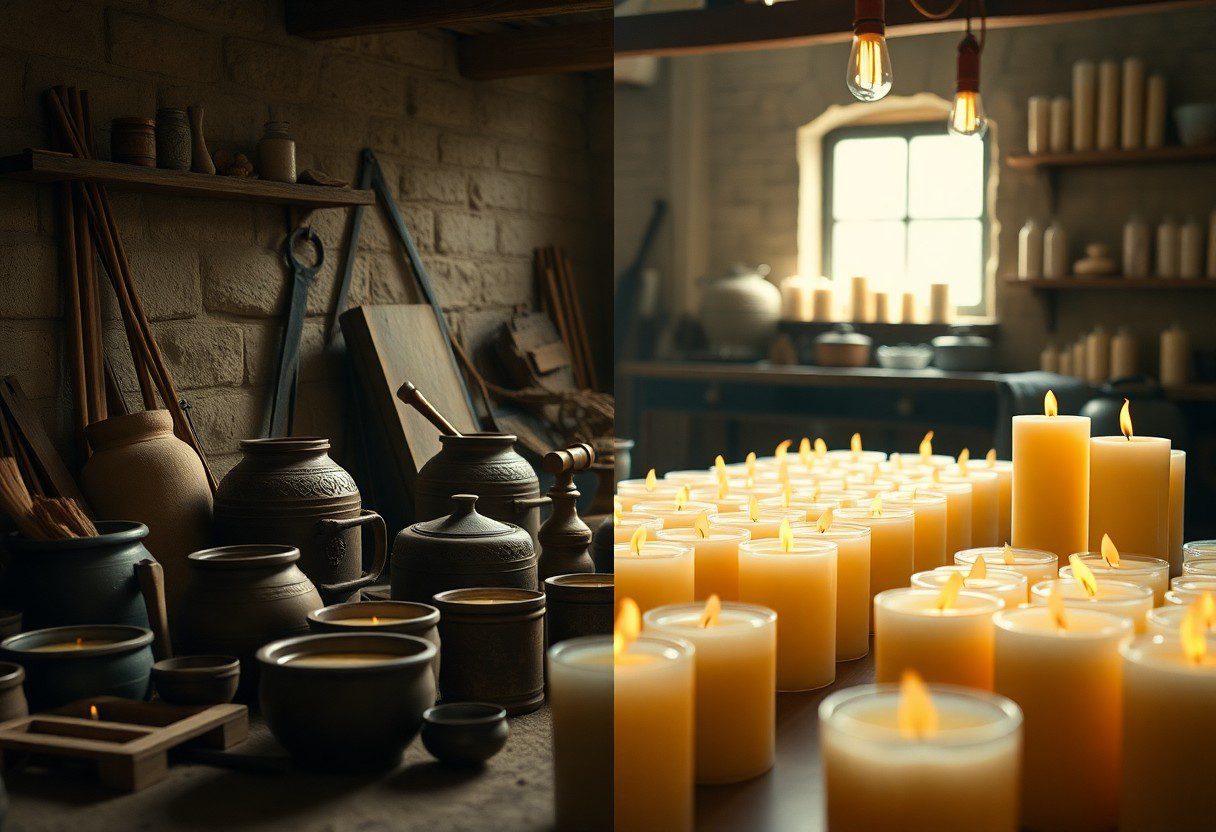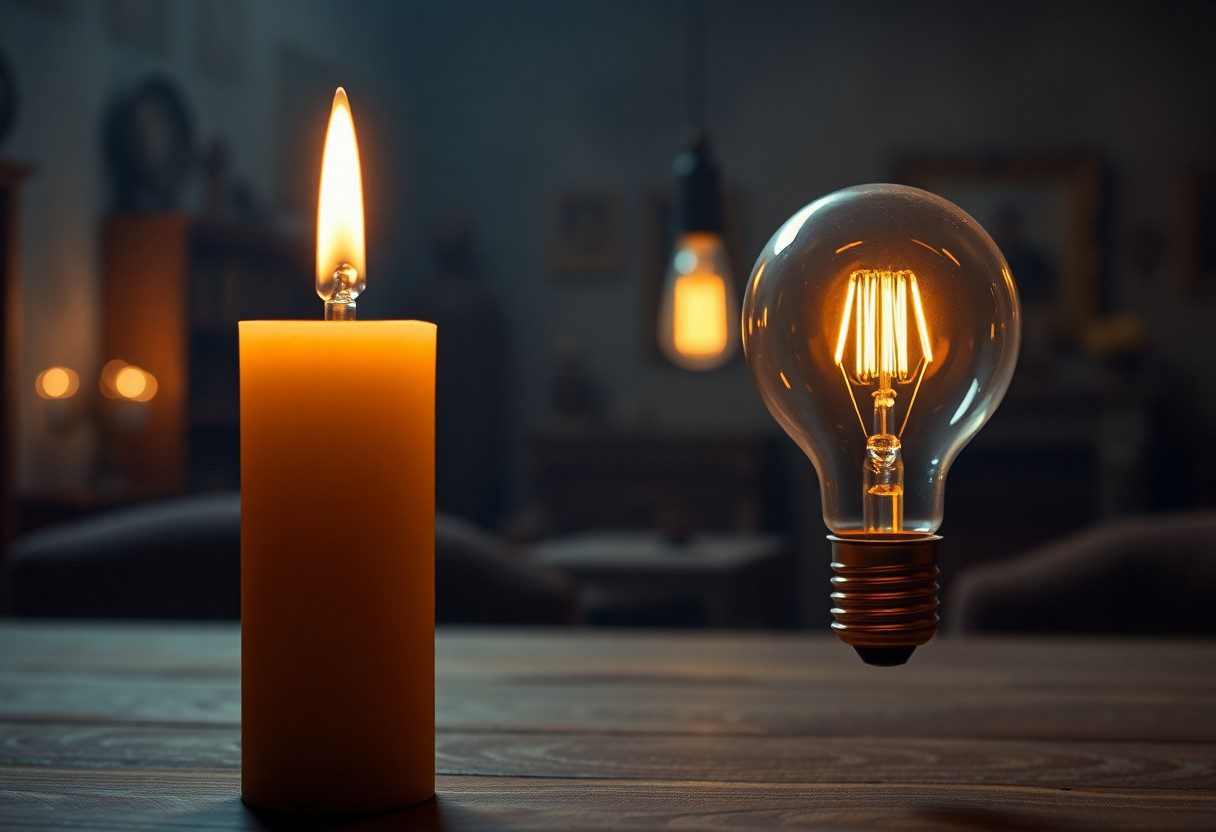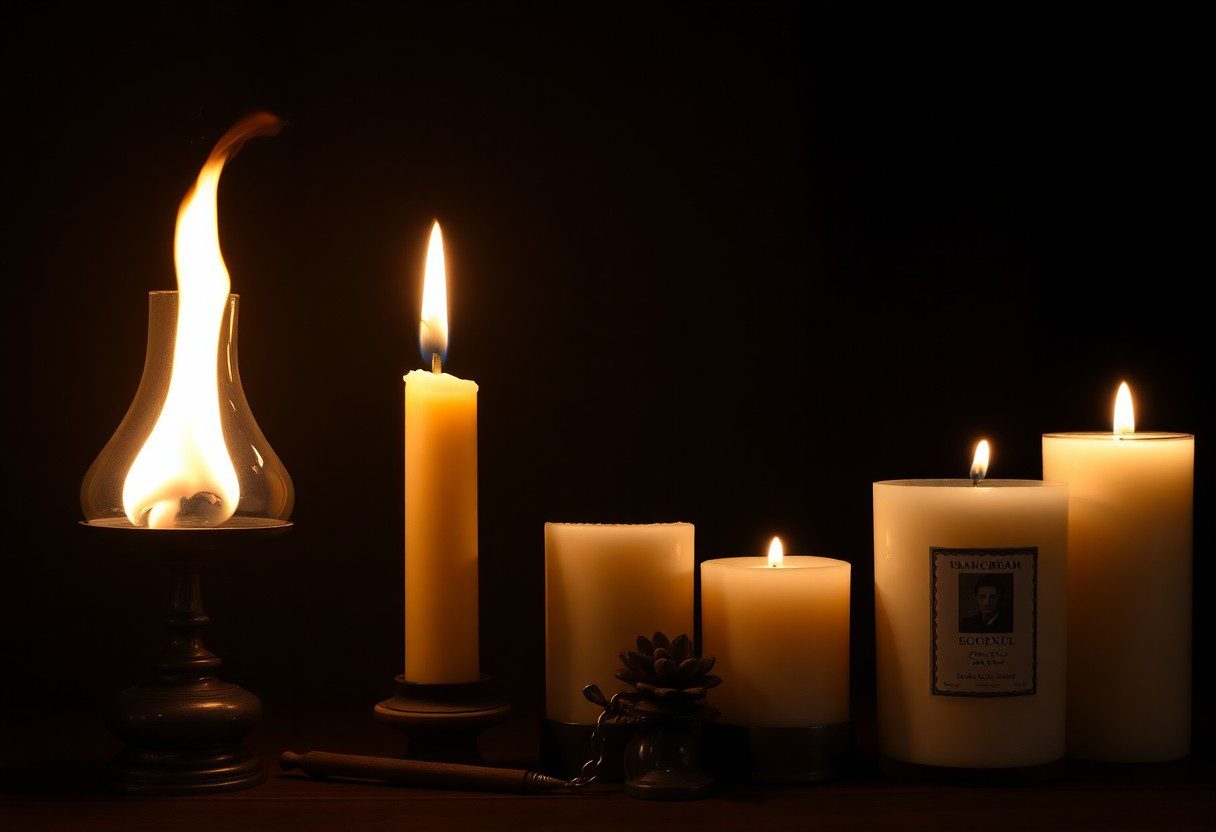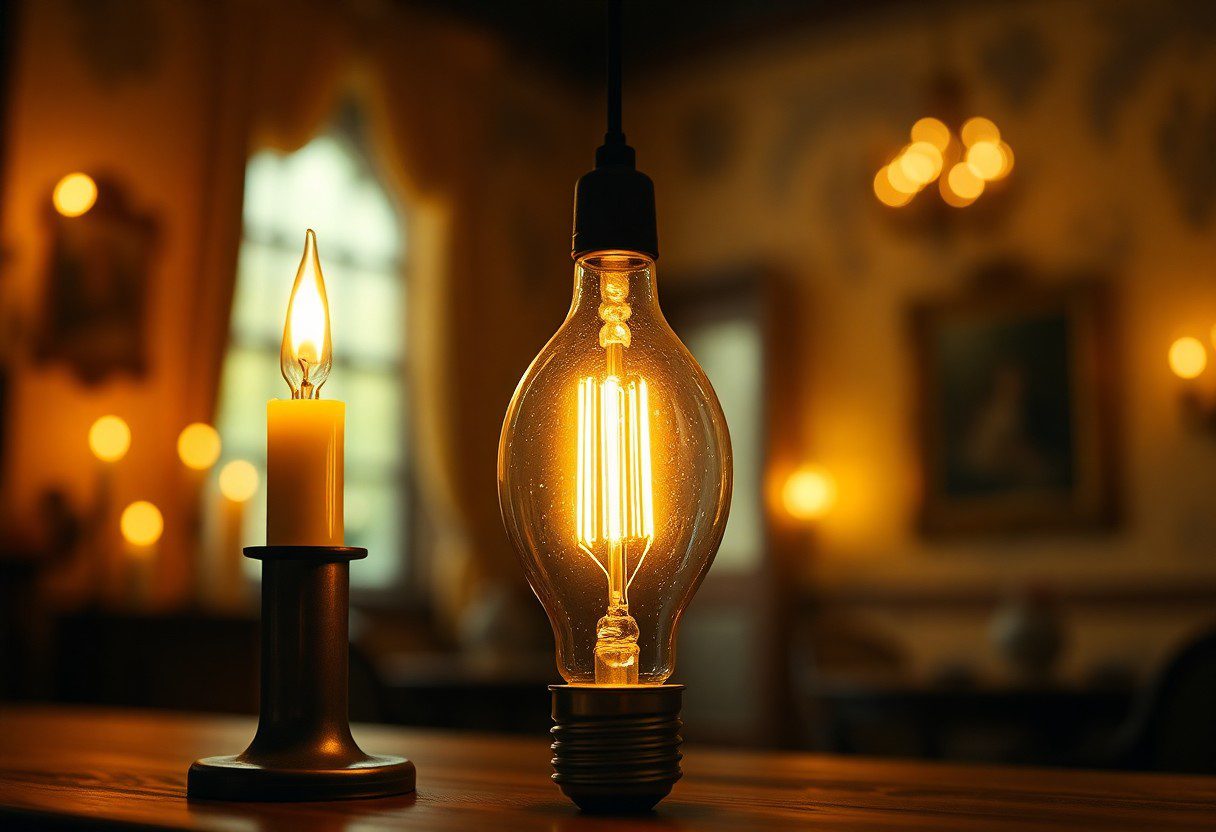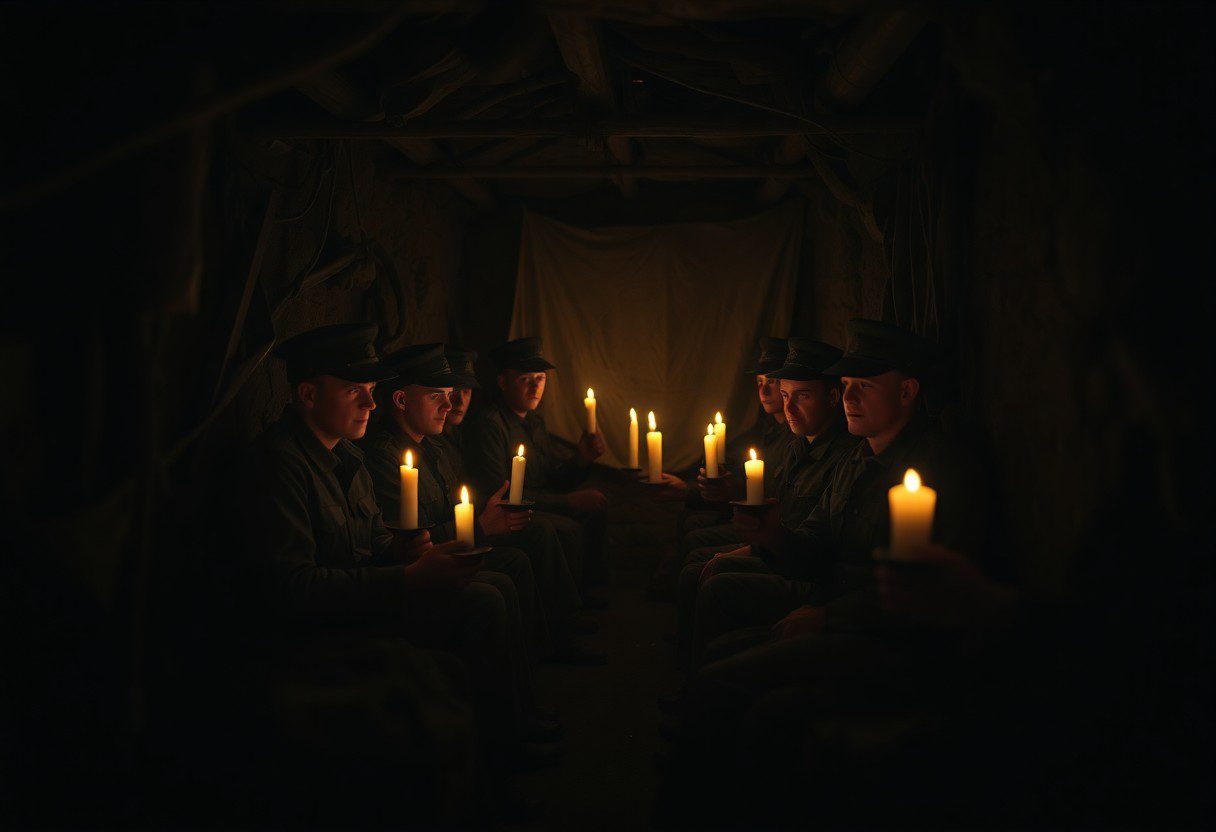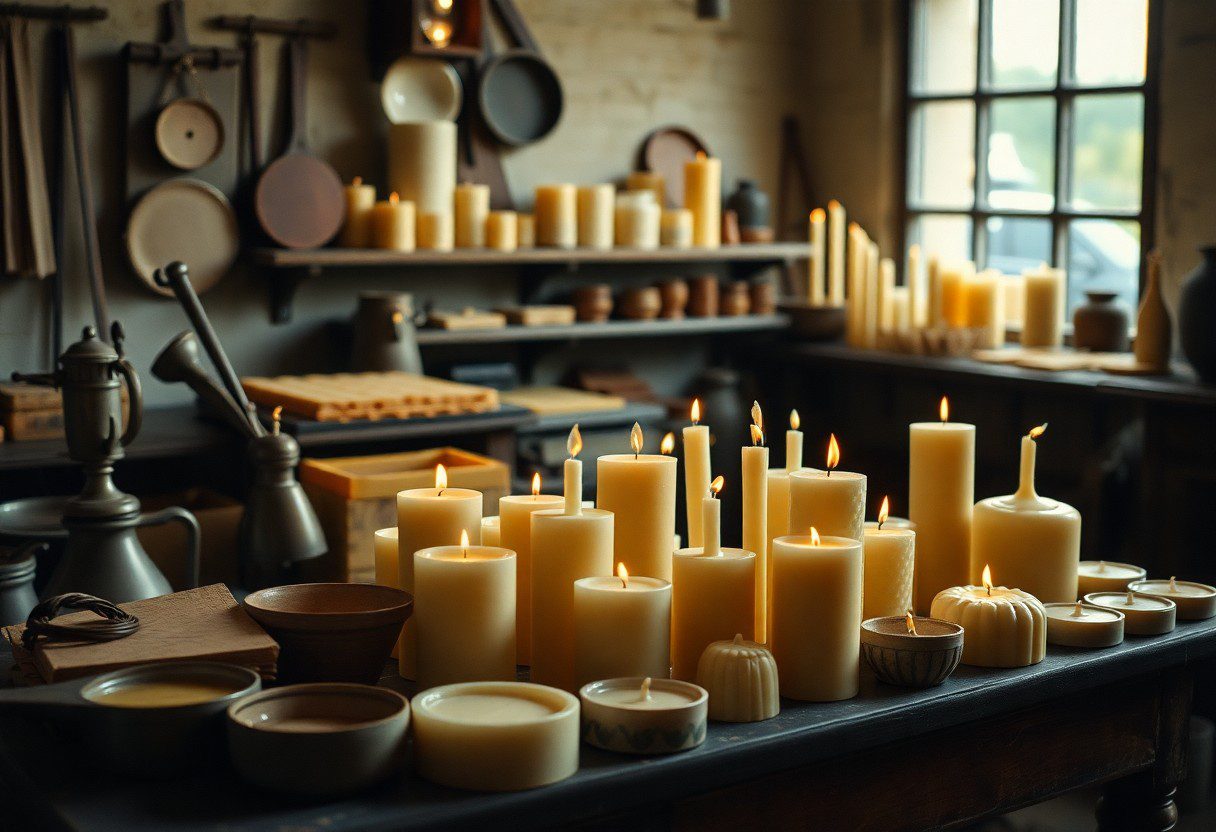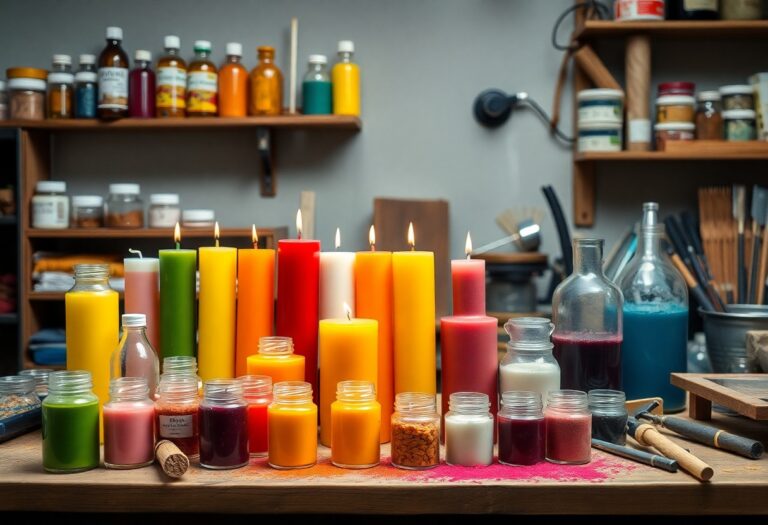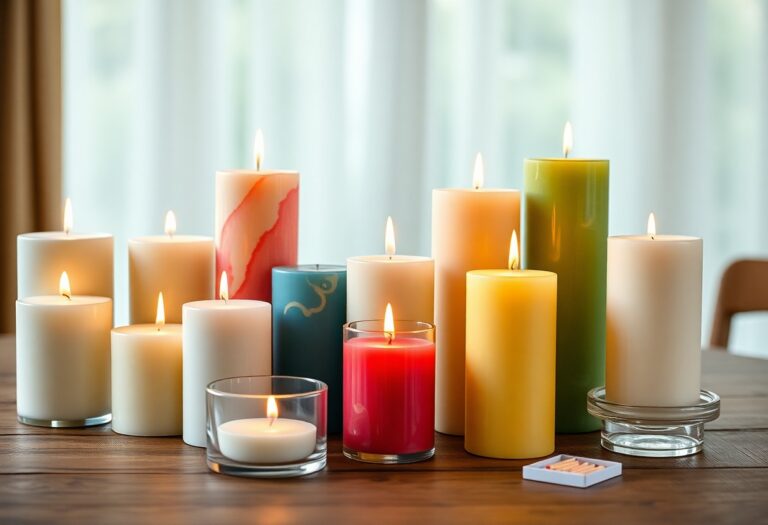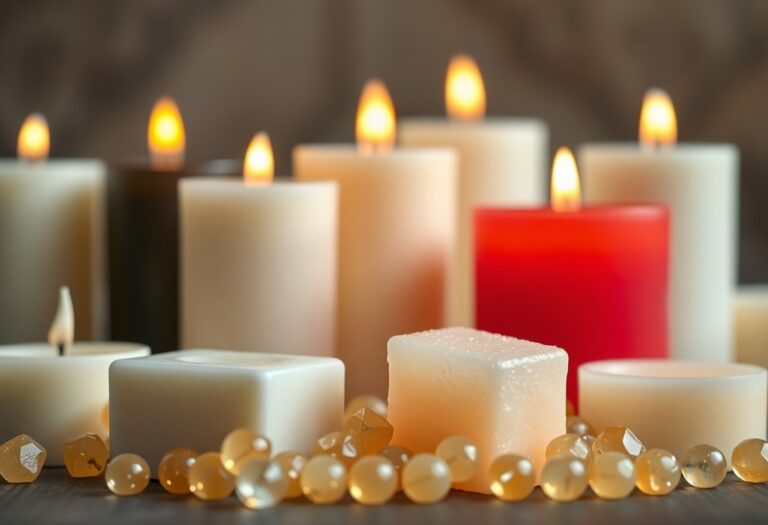From Tallow To Technology – How Electric Lighting Transformed The Role Of Candles In Everyday Life
Tallow candles once played a vital role in illuminating your home, providing light during long, dark nights. With the advent of electric lighting, these humble candles became overshadowed, but their importance has not entirely faded. As you explore the journey from these basic light sources to the advanced technology we have today, you’ll discover how electric bulbs made your life easier, safer, and more efficient. However, candles still hold an vital place in creating ambiance and enhancing your rituals, highlighting the duality of their charm in a technological world.
The Evolution of Lighting
To understand the profound impact that electric lighting has had on the role of candles, you must first appreciate the history of lighting itself. For centuries, candles have served as a primary source of illumination, evolving from primitive torches to the more sophisticated offerings of the past. Your ancestors relied heavily on candles made from tallow or beeswax, using them not only for light but also for ritualistic and decorative purposes. As society progressed, the need for effective lighting became apparent, leading to a gradual transition towards the use of gas lamps and eventually electric lighting in the 19th century.
The Role of Tallow and Beeswax Candles
The candles made from tallow, rendered from animal fat, and beeswax, produced by honeybees, dominated the early candle-making landscape. The former was more abundant and cost-effective but also had the downside of producing a smoky flame and an unpleasant odor while burning. On the other hand, beeswax candles offered a cleaner burn, bright light, and a subtle natural fragrance, making them a luxury item. Understanding the differences between these two materials gives you insight into the societal classes of the time, where beeswax candles were often reserved for the wealthy, while tallow candles were common in lower-income households.
Early Alternatives to Candles
Along the journey of discovery and innovation in lighting, several early alternatives to candles emerged. Before the advent of electric lighting, people sought various ways to illuminate their homes and surroundings. Oil lamps, utilizing whale oil or other fats, were popular for their ability to produce a steady and bright flame, often outshining their candle counterparts. Additionally, kerosene lamps became widespread during the 19th century, transforming how you lit your home but introducing a new set of challenges related to safety and accessibility.
A turning point in this period of experimentation was the introduction of gas lighting in urban areas. This advance harnessed the already known technology of gas combustion, allowing increased illumination and pushing your reliance on candles further into the background. While gas lamps provided heightened safety and brighter light, they also posed risks—explosions and fumes presented significant hazards, leading to a clamor for safer alternatives, which would eventually pave the way for electric lighting innovations that completely redefined how you interact with light.
The Advent of Electric Lighting
Even as the clock struck night, the world began to shift dramatically with the introduction of electric lighting. Traditional means of illumination such as candles, oil lamps, and gas lights were clinging on to their historical relevance, yet innovation was on the horizon. The ability to generate light through electricity not only promised safety from the hazards of open flames but also offered a source that could illuminate homes and streets brighter and longer than ever before. As cities expanded, the potential for electric lighting to change the landscape became apparent, transforming the way you interact with the night and fundamentally altering the social fabric of everyday life.
Pioneering Inventions and Innovations
Before electric lighting became a common feature in homes, a series of groundbreaking inventions laid the groundwork for this transformation. Pioneers like Thomas Edison and Nikola Tesla were at the forefront, offering innovations that made electric light accessible and practical for public use. Edison’s improved incandescent bulb revolutionized illumination by combining long-lasting functionality with a warm glow that was more pleasing to the eye than the harshness of gas light or the flicker of candles. You began to see this new technology emerge in general stores, theatres, and eventually residences, creating a fascinating shift in how light was produced and consumed.
The Shift in Public Perception
By the time electric lighting became prevalent, public perception had begun to embrace this new form of illumination. Gone were the days when dim candlelight and smoky oil lamps defined evenings; instead, you found yourself surrounded by the bright, consistent glow of electric bulbs. The newfound safety—due to the elimination of open flames—provided a sense of security that allowed families to stay up later and engage in activities they previously considered too risky in the dark. The aesthetic charm of candlelight began to take a back seat as electric lighting made it possible for you to recreate evenings filled with warmth and clarity.
In addition, the shift in public perception was bolstered by the rapid spread of electricity into urban areas, fostering a sense of modernity. The accessibility and affordability of electric light made it a symbol of progress and innovation, while candles began to be viewed more as decorative items than everyday necessities. You might find yourself using candles for ambiance or special occasions, rather than important lighting in the home. As your world brightened with electric lighting, the dynamic role of candles evolved, cementing their place in culture as cherished artifacts rather than pragmatic solutions for illumination.
Impact on Daily Life
Changes in Household Practices
The advent of electric lighting has significantly transformed how you organize your household tasks. Before electric lights became commonplace, the flickering glow of candles dictated your schedule; you relied on daylight to perform chores and social activities. With the introduction of electric light, you gained unprecedented flexibility. You could now cook dinner, complete laundry, or host guests well into the night without concern for dwindling candle supplies. This newfound freedom allowed you to structure your daily routines much more efficiently, paving the way for modern lifestyles.
Moreover, the transition from candles to electric lighting also enhanced your overall safety at home. While candles posed risks like wax spills or accidental fires, electric lighting brought a level of consistency and reliability that reduced these hazards. With fewer concerns about fire, you could feel more at ease inviting friends over for evening gatherings or pursuing activities such as reading, which were previously limited by the availability of candlelight. This shift not only modernized home life, but it also promoted a culture that valued longer hours for leisure and productivity.
The Social and Cultural Ramifications
At the same time, electric lighting brought about significant changes in the social fabric of your community. Social interactions transformed, as gatherings could now extend late into the night, enabling deeper connections and fostering new friendships. You may find yourself part of a society that embraces nightlife, as theatres, restaurants, and public spaces all began to adapt to electrified environments. The vibrancy of city life grew, with illuminated streets inviting more foot traffic after dark and nurturing a sense of community that candlelight could never support.
Also, electric lighting has reshaped your cultural perceptions around celebration and ritual. Festivals and holidays that once relied on candles for ambiance now utilize elaborate lighting displays, which have become a hallmark of modern festivities. You are likely to experience environments that celebrate innovation and creativity through light, as elaborate decorations convey a sense of joy and spectacle. This shift toward electric lighting fosters not only a safer, more convenient lifestyle, but also a cultural landscape where creativity and community spirit thrive in the glow of light. It has ultimately led to a world where light is intertwined with your traditions, memories, and social experiences, redefining how you perceive both daily life and special occasions.
The Candle Industry Response
For centuries, candles have illuminated your homes, providing both practical light and a warm, inviting ambiance. However, the advent of electric lighting in the late 19th and early 20th centuries posed a significant challenge to the candle industry. As homes and businesses started to light up with the flick of a switch, the once vital candle began to lose its everyday appeal. Rather than retreating, the candle industry adopted various strategies to adapt to this new technological landscape, evolving its products and marketing efforts to maintain relevance in a transformed market.
Adapting to New Technologies
Behind the scenes, candle manufacturers recognized that they needed to reinvent themselves in the face of electric lighting. They began to innovate by creating specialty candles designed for specific purposes, such as aromatherapy, decorative displays, and relaxation rituals. These candles offered a unique value proposition that electric lighting simply could not replicate—a sensory experience that engaged the sense of smell and sight, transforming your space into a haven of tranquility and comfort. By embracing new materials and techniques, including the incorporation of wax blends, vital oils, and stylish containers, candles became more than just a source of light; they evolved into a lifestyle accessory.
Marketing Candles in the Electric Age
Electric lighting did not completely extinguish the candle market; rather, it prompted a shift in how manufacturers approached marketing their products. As electric light became commonplace, candle companies capitalized on nostalgia and the emotional connection you have with lighted candles in moments of intimacy and celebration, such as romantic dinners, birthday parties, and religious ceremonies. They strategically positioned candles as the perfect solution for creating a cozy atmosphere when electric lights felt too harsh or impersonal.
Marketing campaigns focused on the unique experiences that candles could offer, emphasizing their role in enhancing mood and ambiance. By aligning their brand messages with themes of relaxation, self-care, and mindfulness, candle producers sought to resonate with your growing interest in wellness and personal well-being. Through creative advertising, product placement, and social media engagement, the candle industry successfully tapped into your desires for emotional fulfillment, ensuring that the flicker of candlelight remained a cherished aspect of your everyday life.
Candles in the Modern World
Despite the prevalence of electric lighting in contemporary society, candles have not lost their significance in your daily life. They have gracefully transitioned from their historical role as a primary source of illumination to becoming symbols of tranquility and celebration. Modern candles come in an array of forms, scents, and sizes, catering to diverse consumer preferences. You can even explore candles made from traditional materials, such as tallow, which you can learn more about in The World of Tallow Candles: History, Culture, and Sustainability. These options provide a delightful nod to the past while enriching your current candle experience in innovative ways.
Contemporary Uses and Trends
With a rise in eco-conscious living, you might find that candles made from sustainable materials are trending. Soy, beeswax, and crucial oils are frequently favored for their environmentally friendly properties and delightful fragrances. You could also notice a growing preference for handmade and artisanal candles, as they often come with a personal touch and unique attributes that mass-produced alternatives lack. Additionally, candle-making has become a popular hobby, allowing you to express creativity while crafting personalized gifts for friends and family.
The Candle’s Role in Wellness and Ambiance
Role of candles in your wellness journey cannot be overstated. As you light a candle, the flickering flame and soothing scents can create an inviting atmosphere that eases stress and promotes relaxation. Many people use candles in their meditation or yoga practices, as the gentle glow can help you focus and cultivate mindfulness. The sensory experience of lighting a candle fills your space with warmth and comfort, inviting a sense of calm amidst the chaos of everyday life.
Hence, incorporating candles into your home can significantly enhance your overall well-being. The gentle light can energize your spirit and uplift your mood, while specific scents, like lavender or sandalwood, can provide powerful aromatherapy benefits. As you navigate the modern world, utilizing candles for both ambiance and self-care can create a harmonious balance that nurtures your mental and emotional health. Understanding these positive impacts will help you appreciate the timeless appeal of candles in your contemporary lifestyle.
Sustainability and the Future of Candles
Keep in mind that as the world increasingly emphasizes sustainable practices, the role of candles is evolving once more. The modern consumer is becoming more conscious of the environmental impact of the products they use, especially when it comes to the materials and energy sources involved. This shift has prompted candle manufacturers to explore sustainable options and reduce their carbon footprints. For an intriguing look into the historical context of lighting, you might want to read Tallow and Gaslight: What Did People Do Before Electricity?. Candles made from renewable resources such as soy wax, beeswax, and other eco-friendly materials are becoming increasingly popular, providing alternatives that are kinder to the environment.
Eco-Friendly Options and Innovations
To enhance the sustainability of candles, numerous innovative practices are emerging within the industry. Biodegradable wax options, sustainable packaging, and eco-conscious production methods are being adopted by brands eager to reduce waste and pollution. You may find that many companies now source their materials from suppliers who emphasize responsible forestry and safe farming. As a result, you can enjoy the ambiance and warmth of candles while supporting businesses that align with your values regarding sustainability.
Balancing Tradition with Modernity
Across generations, candles have served as symbols of comfort, celebration, and ritual. In today’s fast-paced world, many look to modernize traditional practices while still honoring the artistry of candle making. You may notice an increase in artisan candle makers who blend traditional techniques with innovative designs, incorporating scents and aesthetics influenced by contemporary trends. With this balance, you can enjoy the nostalgic charm of candles without sacrificing the benefits of modern technology.
For instance, many artisan candles are infused with unique fragrances derived from natural imperative oils, offering a more luxurious and eco-friendly alternative to synthetic scents. These candles not only elevate your space but also enhance your overall well-being. Furthermore, candle brands are increasingly adopting refillable containers and minimalist packaging designs, which encourages you to engage with sustainable practices while still celebrating the rich history and artistry behind candle making. By embracing these advancements, you can contribute to a brighter and more sustainable future for candles in your home.
Conclusion
From above, you can see how the evolution from tallow candles to electric lighting has significantly altered the role of candles in your everyday life. Originally, candles served as a primary source of light, illuminating homes and guiding evening activities. However, once electric lighting became widely available, candles transitioned from functional necessities to decorative and atmospheric elements. Your relationship with candles has transformed; instead of relying on them for basic visibility, you now use them to create ambience, enhance special occasions, or evoke a sense of nostalgia.
This shift underscores how technological advancements impact your daily experiences and lifestyle choices. Even though electric lighting has rendered traditional candles less imperative for illumination, the emotional and aesthetic value of candles persists. Today, you might find yourself lighting a candle not just for practicality, but for the comfort and warmth it brings to your space, showcasing how the role of candles has evolved while remaining an integral part of your sensory experience.
Q: How did the introduction of electric lighting impact the production and use of candles?
A: The introduction of electric lighting significantly reduced the demand for candles as a primary source of illumination. Prior to electric lights, candles were important for providing light in homes and public spaces. However, with the rise of electricity in the late 19th century, households began to favor electric lamps for their brighter, more consistent, and safer light. This shift led to a decline in candle production as manufacturers adapted to the changing market, focusing more on specialty candles rather than everyday use. As a result, candles transitioned from being a necessity to a luxury or decorative item, often used for ambiance rather than illumination.
Q: What cultural changes arose from the shift from candles to electric lighting?
A: The shift from candles to electric lighting brought about significant cultural changes in how people interacted within their spaces and how they organized their daily lives. With electric lighting, people were no longer bound by the limitations of daylight or the duration of candle burn time, enabling longer hours for social gatherings, work, and leisure activities. This increased accessibility to light led to a transformation in social customs, where evening activities became more common. Furthermore, the ambiance created by soft candlelight began to be associated with romance and relaxation, resulting in candles being repurposed for creating atmosphere rather than function. Overall, electric lighting revolutionized societal routines and the way people lived after dark.
Q: What are some modern uses of candles in a world dominated by electric lighting?
A: In today’s society, despite the prevalence of electric lighting, candles have found a variety of modern applications that go beyond their original purpose. They are often used for enhancing mood, providing a sense of relaxation, and creating a warm and inviting atmosphere in homes and events like weddings or parties. In addition to aesthetic reasons, candles are popular for their aromatherapy benefits; scented candles are frequently utilized to promote well-being and alleviate stress. Moreover, candles are used in religious and ceremonial practices, symbolizing various meanings and traditions. This reflects a cultural shift where candles have taken on a more symbolic and experiential importance rather than purely functional utility.


